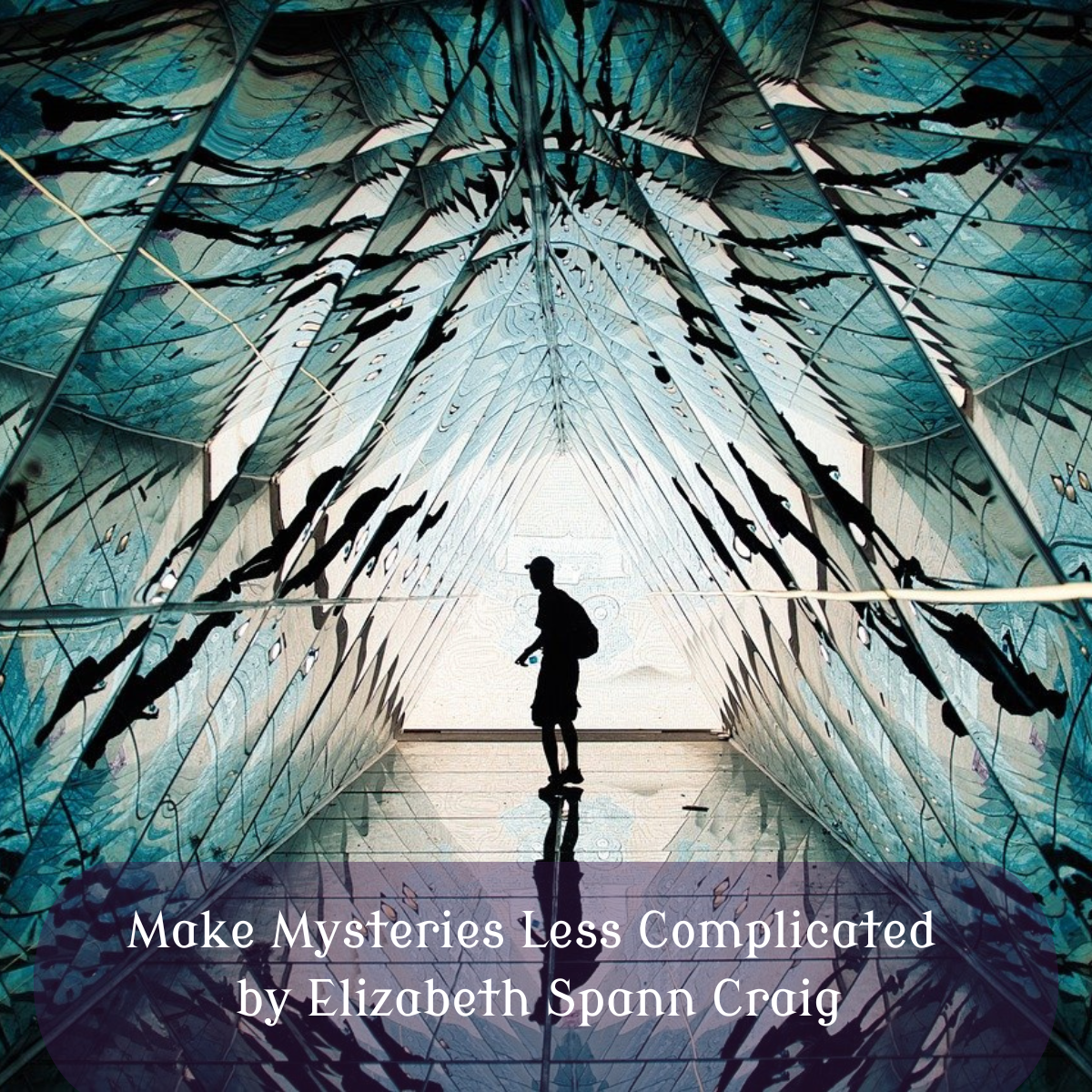by Elizabeth S. Craig
There’s something to be said for making mysteries less complicated. It’s no fun for the reader when the murderer is revealed, and they’re not sure who the character is. It’s also no fun if the mystery is so convoluted that it’s hard to follow.
I’ve read a couple of mysteries lately that were very confusing. Once the puzzle was solved, I had to go back through the book to try to see how the pieces fit together. I read reviews of the books, curious what other readers thought. Like me, they’d been lost in the plot.
Here are a few tips to keep your mysteries complex without making them too complicated:
Limit suspect number: I usually work with five suspects, with one of them eliminated in some fashion during the course of the book. If you have too few suspects, the mystery might not have enough of a surprise ending. Too many, and they’re just tough to keep up with.
Remind readers who the suspects are and how they connect to the victim: You can work with a slightly larger cast of suspects, but you’ll need to remind readers who the suspects are if they’ve been off-stage for too long. It’s also important to quickly remind readers who the suspect is (David, Jack’s former employee, entered the shop).
Avoid similar-sounding names: Avoid names that start with the same letter, or that rhyme with each other (Bill and Bob, Stan and Dan).
Cut out unnecessary and confusing elements: In one of my recent mysteries, I’d outlined two cold case deaths that the sleuth was investigating. When I was writing the book, though, it seemed confusing to have two deaths that had taken place a decade or more earlier. Instead, I had one cold case death and one recent death of a character who knew too much.
If you write mysteries, what have I missed? As a reader, what elements do you find confusing in books?
Make Mysteries Less Complicated: Share on X
Image by Roderick Qiu from Pixabay

Thanks for these helpful tips, Elizabeth. I might want to try writing a mystery one of these days, and I really appreciate your suggestions.
Glad they helped, Natalie!
You're right that there's such a thing as making the reader work too hard to follow along with a mystery. And your ideas are all excellent. They're very timely for me, too, as I'm working through some of those things in my WIP. It's funny you'd mention names, too; I'm having to go through and make sure the names are different enough, and that the characters are distinctive enough. Otherwise, you're right; they all jumble together.
They all just become people who wanted to kill the victim, ha.
With any story, too many characters can become confusing. Or annoying as only so many can occupy the page at once and some vanish for awhile.
Very true that some of these apply to other genres, as well!
In a recent discussion on a listserve for mystery fans, people noted that if a character appears early and then disappears for most of the novel, you know that's the killer. So not only are people who try that confusing some readers, but they're not being as clever as they think they are! It's better to let your detective, amateur or professional, work through the suspects and uncover clues until they reach a logical conclusion.
Excellent advice! Maybe it would be fun for writers to make a twist on that expectation and have a “disappearing character” who ends up dead later in the book? Or could be used as a red herring.
Hi Elizabeth – some mysteries are so mundane I get bored, on the other hand some are plain OTT … I'm reading one like that at the moment relative to King John and the early 1200s … Magna Carta time. These tips will help aspiring writers … and you've got wonderful groups of readers, friends and bloggers who really enjoy your books: I would too – just my reading is somewhat different. C'est la vie – I guess. You've always got excellent ideas for us – cheers Hilary
Wow, a mystery dating back to 1200 would definitely be different! Thanks for coming by!